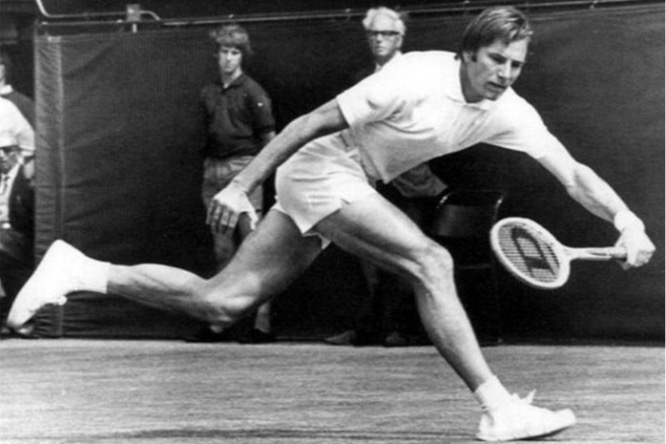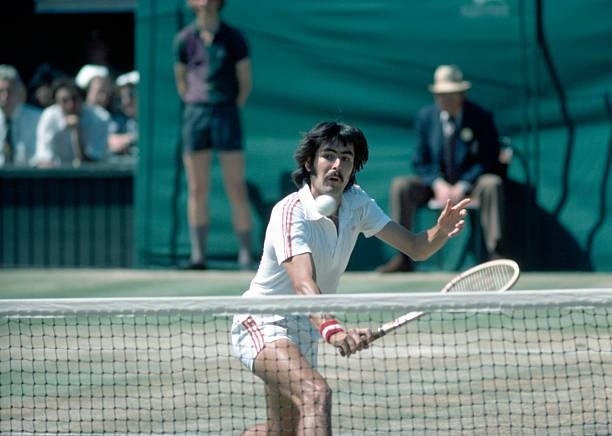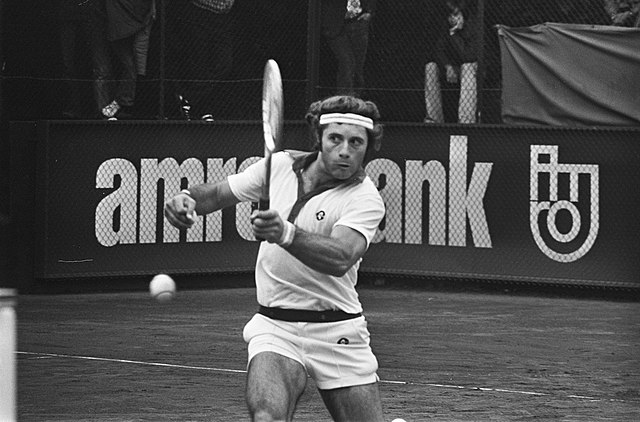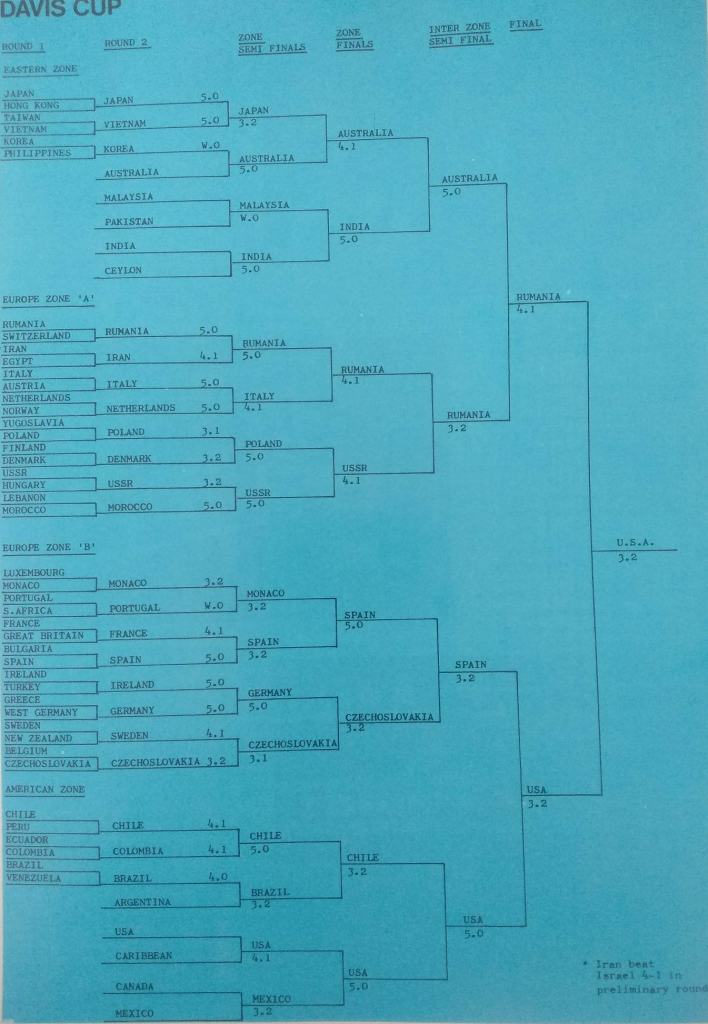It took more than a year to decide on a new format, but barely a week to make the draw. With 12 countries qualifying for the inaugural Davis Cup Finals in home-and-away ties earlier in month, the field of 18 is set. Using the ITF’s own system to rank countries, the 18 teams were divided into three “pots,” then assigned to the six round-robin groups that will kick off the tournament this November in Madrid.
The new format sounds complicated, but as round-robin events go, it’s easy enough to understand. Each of the six round-robin groups will send a winning team to the quarter-finals. Two second-place sides will also advance to the final eight, as determined by matches won, then sets won, and so on as necessary, until John Isner and Ivo Karlovic stand back to back to determine which one is really taller. From that point, it’s an eight-team knock-out tournament.
Here are the groups, as determined by yesterday’s draw, with seeded countries indicated:
- Group A: France (1), Serbia, Japan
- Group B: Croatia (2), Spain, Russia
- Group C: Argentina (3), Germany, Chile
- Group D: Belgium (4), Australia, Colombia
- Group E: Great Britain (5), Kazakhstan, Netherlands
- Group F: United States (6), Italy, Canada
The ITF ranking system considers the last four years of Davis Cup results, so Spain’s brief exit from the World Group makes the seedings a bit wonky. As it turns out, not only is it a top team (Croatia) who will have to deal with early ties against the Spaniards, the entire Group B trio constitutes a group of death. Russia would be an up-and-coming squad in any format, and it is clearly the most dangerous of the six lowest-ranked sides.
Madrid to Monte Carlo
Last week, I introduced a more accurate, predictive rating system for Davis Cup, involving surface-specific Elo ratings for the players likely to compete. Those rankings put Spain at the top, Croatia second, Russia fifth, and fourth-seeded Belgium 14th in the 18-team field.
Now that we have a draw, we can use those ratings to run Monte Carlo simulations of the entire Davis Cup carnival Finals. As in my post last week, I’m estimating that singles players have a 75% chance of playing at any given opportunity and doubles players have an 85% chance. Those are just guesses–there’s no data involved in this step. Surely some teams are more fragile than others, perhaps because their stars are particularly susceptible to injury or just uninterested in the next event. I’ve excluded Andy Murray, but for the moment, I’m keeping Novak Djokovic and Alexander Zverev in the mix.
(We’re using Elo ratings for each individual player, which means the simulation is telling us what would be likely to happen if it were played today. Things will change between now and November, even if every eligible player shows up. A proper forecast that takes the time lag into account would probably give a slight boost for younger teams [whose players will have nine months to mature] and a penalty for older ones [who are more likely to be hit by injury]. And overall, it would shift all of the championship probabilities a bit toward the mean.)
Here are the results of 100,000 simulations of the draw, with percentages given for each country’s chance of winning their group, then reaching each of the knock-out rounds:
Country Group QF SF F W
ESP 46.1% 59.1% 41.9% 30.3% 19.3%
FRA 54.2% 66.6% 40.6% 25.1% 14.6%
AUS 74.5% 84.4% 46.0% 23.8% 12.1%
USA 53.0% 65.5% 36.8% 19.7% 10.4%
CRO 31.0% 43.0% 27.2% 17.8% 9.8%
GER 52.5% 67.9% 39.7% 17.6% 7.7%
RUS 22.9% 33.1% 19.5% 12.0% 6.1%
SRB 33.0% 47.9% 24.1% 12.6% 6.0%
GBR 66.8% 78.7% 35.9% 12.5% 4.4%
ARG 39.7% 56.6% 28.6% 10.4% 3.8%
ITA 24.3% 35.9% 14.6% 5.5% 2.1%
CAN 22.7% 33.4% 13.1% 4.9% 1.8%
JPN 12.8% 19.5% 7.2% 2.8% 0.9%
BEL 20.3% 32.0% 8.5% 2.1% 0.6%
NED 21.7% 35.5% 8.6% 1.7% 0.3%
CHI 7.8% 12.9% 3.4% 0.6% 0.1%
KAZ 11.5% 19.0% 3.2% 0.5% 0.1%
COL 5.1% 8.9% 1.2% 0.1% 0.0%
Spain is our clear favorite, despite their path through the group of death. Five teams have a better chance of winning their group and reaching the quarters than the Spaniards do, but their chances in the single-elimination rounds make the difference. At the other extreme, Australia seems to be the biggest beneficiary of draw luck. My rankings put them sixth, and they landed in a group with Belgium (the lowest-rated seed) and Colombia (the weakest team in the field). Their good fortune makes them the most likely country to reach the final four, even if Spain and France have a better chance of advancing to the championship tie.
Less randomness, more Spain
What if we run the simulation one step earlier in the process? That is to say, ignore yesterday’s draw and see what each country’s chances were before their round-robin assignments were determined. For this simulation, we’ll keep the ITF’s seeds, so Spain is still a floater. Here’s how it looked ahead of the ceremony:
Country Group QF SF F W
ESP 63.0% 75.9% 52.9% 35.0% 22.6%
FRA 56.8% 70.8% 43.9% 25.7% 14.5%
CRO 55.5% 69.4% 42.2% 25.1% 13.5%
USA 51.3% 65.6% 38.5% 19.8% 10.0%
AUS 48.3% 62.9% 34.8% 17.7% 8.5%
RUS 40.6% 53.5% 30.2% 15.8% 7.9%
SRB 42.9% 55.8% 28.3% 13.5% 5.9%
GER 42.0% 55.7% 27.3% 12.5% 5.4%
ARG 35.9% 49.1% 20.9% 7.9% 2.8%
ITA 33.6% 47.1% 19.2% 7.2% 2.5%
GBR 34.9% 48.3% 20.3% 7.5% 2.5%
CAN 24.5% 35.5% 14.3% 5.3% 1.9%
JPN 19.8% 29.4% 10.6% 3.6% 1.1%
BEL 20.9% 30.4% 7.5% 1.8% 0.4%
NED 9.5% 15.5% 3.5% 0.7% 0.1%
CHI 7.9% 13.3% 2.6% 0.4% 0.1%
KAZ 8.4% 14.1% 2.1% 0.3% 0.0%
COL 4.3% 7.5% 1.1% 0.2% 0.0%
With the “group of death” out of the picture, Croatia jumps from fifth to third, swapping places with Australia. The defending champs lost the most from the draw, while Spain suffered a bit as well.
Elo in charge
Another variation is to ignore the ITF rankings and generate the entire draw based on my Elo-based ratings. In this case, the top six seeds would be Spain, Croatia, France, USA, Russia, and Australia, in that order. Argentina and Great Britain would fall to the middle group, and Belgium would drop to the bottom third. Here’s how that simulation looks:
Country Group QF SF F W
ESP 71.6% 82.8% 57.3% 38.0% 24.1%
FRA 64.6% 77.6% 45.8% 26.7% 14.4%
CRO 63.1% 76.3% 45.8% 25.6% 13.6%
USA 59.7% 73.3% 41.1% 20.2% 10.2%
RUS 58.6% 71.2% 37.0% 19.7% 9.5%
AUS 57.7% 71.4% 37.7% 17.7% 8.8%
SRB 37.1% 53.0% 26.1% 12.1% 5.3%
GER 35.3% 52.3% 24.5% 10.9% 4.6%
ARG 28.0% 44.2% 17.5% 6.4% 2.2%
ITA 27.4% 43.6% 16.9% 6.2% 2.1%
GBR 27.0% 43.1% 16.5% 6.0% 2.0%
CAN 26.7% 41.8% 16.0% 5.8% 2.0%
JPN 15.9% 23.6% 8.1% 2.6% 0.8%
BEL 9.4% 15.1% 3.9% 0.9% 0.2%
NED 6.5% 10.8% 2.3% 0.5% 0.1%
CHI 5.3% 9.0% 1.8% 0.3% 0.1%
KAZ 3.2% 5.8% 0.9% 0.1% 0.0%
COL 3.1% 5.2% 0.8% 0.1% 0.0%
The big winners in the Elo scenario are the Russians, who gain a seed and avoid a round-robin encounter with either Spain or Croatia. Australia gets a seed as well, but the benefit of protection from the powerhouses isn’t as valuable as the luck than shone on the Aussies in the actual draw.
Imagine a world with no rankings
Finally, let’s see what happens if we ignore the rankings altogether. It would be unusual for the tournament to take such an approach, but if there’s ever a time to have a tennis event with no seedings, this is it. The existing rankings are far too dependent on years-old results, leaving young teams at a disadvantage. And my system, while more accurate, doesn’t quite feel appropriate either. It is based on individual player ratings, and this is a team event.
Whatever the likelihood of a ranking-free draw in the Davis Cup future, here’s what a simulation looks like with completely random assignment of nations into round-robin groups:
Country Group QF SF F W
ESP 62.8% 75.4% 52.4% 34.8% 22.5%
FRA 54.8% 68.6% 42.6% 25.0% 13.9%
CRO 53.4% 67.2% 41.0% 23.6% 13.0%
USA 48.8% 62.9% 35.9% 19.1% 9.7%
RUS 47.9% 61.0% 34.8% 18.5% 9.3%
AUS 47.1% 61.1% 34.1% 17.6% 8.5%
SRB 41.5% 54.3% 28.0% 13.5% 6.1%
GER 40.3% 53.6% 26.7% 12.3% 5.3%
ARG 31.9% 44.9% 18.8% 7.2% 2.6%
ITA 31.5% 44.2% 18.6% 7.1% 2.5%
GBR 30.7% 43.4% 17.6% 6.5% 2.3%
CAN 30.4% 42.7% 17.4% 6.4% 2.2%
JPN 25.9% 36.4% 13.5% 4.6% 1.4%
BEL 17.2% 25.9% 7.2% 1.8% 0.4%
NED 12.5% 20.0% 4.6% 0.9% 0.2%
CHI 10.4% 16.9% 3.5% 0.6% 0.1%
KAZ 7.0% 11.8% 1.9% 0.3% 0.0%
COL 5.9% 9.7% 1.5% 0.2% 0.0%
Round-robin formats do a decent job of surfacing the best teams, so the fully random approach doesn’t give us wildly different results than the seeded simulations. The main effect of the no-seed version is to give the weakest sides a slightly better chance at advancing past the group stage, since there is a better chance for them to avoid strong round-robin competition.
Madrid or Maldives redux
Some top players are likely to skip the event. Zverev has said he’ll be in the Maldives, and Djokovic has hinted he may miss the tournament as well. The new three-rubber format means that teams will suffer a bit less from the absence of a singles star, assuming he also isn’t one of the best doubles options as well. Still, both Germany and Serbia would much rather head to the party with a top-three singles player on their side.
Here are the results of the intial simulation–based on the actual draw–but without Djokovic or Zverev:
Country Group QF SF F W
ESP 46.5% 59.5% 44.0% 33.2% 21.3%
FRA 68.2% 79.3% 49.6% 30.6% 17.8%
AUS 74.3% 84.5% 46.1% 24.2% 12.6%
USA 53.4% 66.2% 37.5% 20.4% 10.8%
CRO 30.3% 42.5% 28.4% 19.6% 10.8%
RUS 23.2% 33.6% 21.1% 13.8% 7.0%
GBR 67.0% 79.0% 40.9% 14.6% 5.2%
ARG 52.1% 66.9% 35.5% 12.9% 4.9%
GER 36.4% 52.3% 23.3% 7.2% 2.2%
ITA 24.2% 35.9% 14.5% 5.7% 2.2%
CAN 22.4% 33.2% 13.4% 5.2% 2.0%
JPN 19.4% 31.7% 11.5% 4.8% 1.6%
BEL 20.5% 32.4% 8.6% 2.3% 0.6%
SRB 12.4% 21.1% 6.0% 1.9% 0.5%
NED 21.6% 35.5% 9.8% 2.0% 0.4%
CHI 11.4% 18.5% 4.9% 0.9% 0.2%
KAZ 11.3% 19.1% 3.8% 0.5% 0.1%
COL 5.2% 9.0% 1.2% 0.2% 0.0%
Germany’s chances of winning the inaugural Pique Cup would fall from 7.7% to 2.2%, and Serbia’s odds drop from 6.0% to 0.5%. Argentina and France, the seeded teams sharing groups with Germany and Serbia, respectively, would be the biggest gainers from such high-profile absences.
Anybody’s game
I’ve been skeptical of the new Davis Cup, and while I remain unconvinced that it’s an improvement, I find myself getting excited for the weeklong tennis hootenanny in Madrid. These simulations were even more encouraging. As always, the ranking and seeding isn’t the way I’d do it, but in this format, the differences are minimal. The event format will give us a chance to see plenty of tennis from every qualifying nation, and the high level of competition from most of these countries ensures that most teams have a shot at going all the way.





